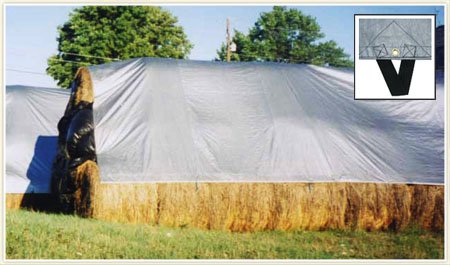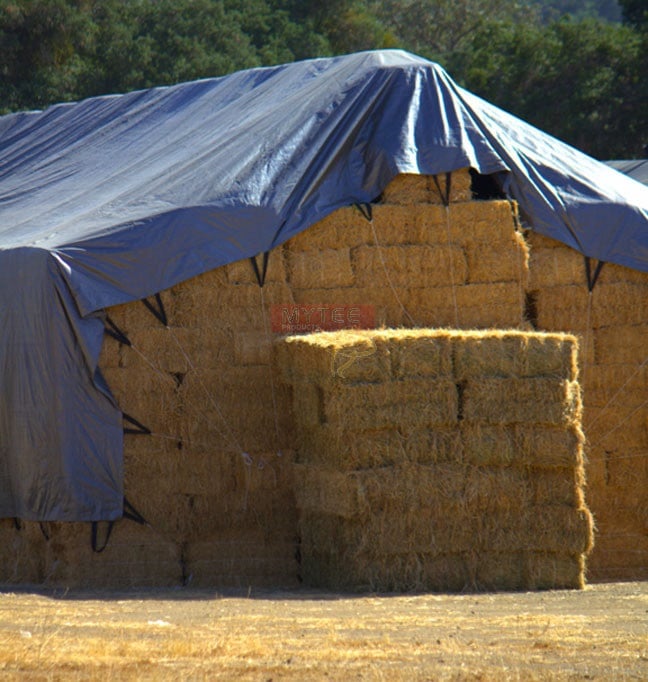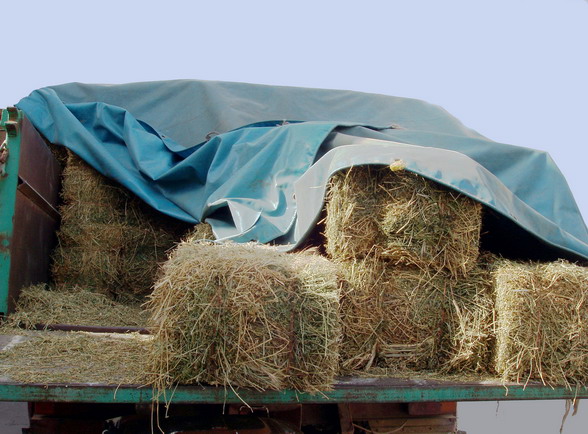It is that time of year again when growers are starting to think about winter hay storage. Every year, there is that nagging question of whether to go with tarps or store excess hay in the barn. That is considering a grower even has a barn to work with. Those who do not are forced to rely on hay tarps or temporary storage structures.

The debate over whether to use tarps or not comes largely from the less gleeful stories we hear every spring about crop loss resulting from tarp failure. The first thing to understand is that no storage solution is perfect. The second thing to note is that much of the effectiveness of hay tarps lies in how they are deployed. With that in mind, below are a few fall reminders for those growers intending to tarp their hay this winter.
1. Pay Attention to How You Stack
One of the biggest problems growers face is snow and ice. When a stack is not constructed properly, it allows certain portions of the hay tarp to lay flat and, as a result, collect precipitation. Get enough snow and ice built up and it could be nearly impossible to remove a tarp when hay is needed in early spring. The best way to avoid this problem is to pay attention to how you stack.
Hay stacking should really be done in a-frame or pyramid shape if you are planning to use tarps. Giving the stack a sharp enough incline will make it easier for precipitation to roll off. You still may have to go out to sweep your stacks after an especially persistent snowfall, but clearing an inclined stack is a lot easier than clearing a flat stack. It is a lot safer too.
2. Check Your Tie Downs
Any experienced tarp user will tell you that the key to avoiding most problems is keeping hay tarps tight and secure. Doing so requires that tie-downs be checked on a regular basis. Remember that even the slightest bit of wind underneath a tarp can cause big problems in both the short and long terms. Checking once a week should be sufficient. Tie-downs should definitely be checked immediately after storms to assess the extent of wind damage.
3. Utilize PVC Pipe
Another common complaint among hay growers is that the grommets built into their tarps fail in severe weather. We suggest a tarp with webbing loops or a built-in sleeve capable of accommodating PVC pipe. Securing tie-downs with PVC pipe results in a much stronger system than tying down with grommets alone. You can still use the grommets along with bungee straps for a little extra strength.
4. Inspect Tarps during the Fall
Last but not least is the reminder to check all your hay tarps in the fall. Do not wait until you start stacking hay to find out that one or more of your tarps is ripped or torn. Now is the time to address any damage while you’re not under pressure to get that hay cut and stacked.
Minor damage can be repaired with one of our tarp repair kits. Major damage, like torn seams for example, may require a more heavy-duty solution. You can obviously browse our selection of farming supplies should any of your tarps need complete replacement.
Fall is harvest time in North America. In just a few months, the snow will be flying and the temperatures falling. If you plan to store hay this winter, make sure you are fully prepared with everything you need. Mytee Products carries high-quality hay tarps, spiral anchor pins, and temporary storage structures.









